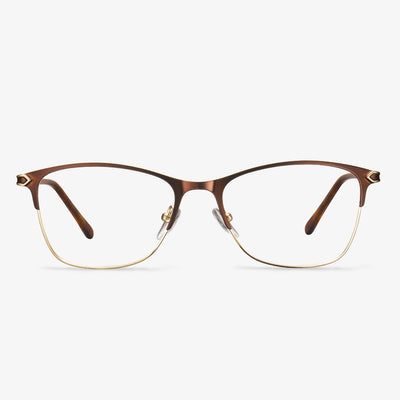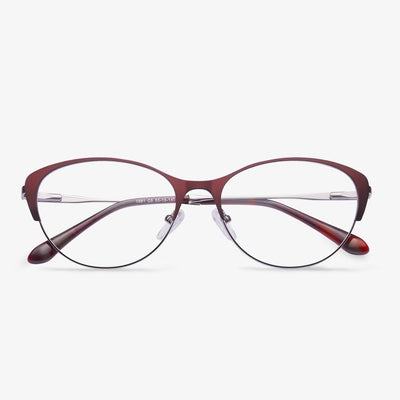Why are acetate frames so unique?
The production of acetate frames can be realized in various colors and patterns without painting the frames. The layering of acetate fiber brings varying degrees of transparency and patterns to the spectacle frame. Then this beautiful design makes acetate sheet glasses a more ideal choice than ordinary plastic spectacle frames.
Foster Grant
Foster Grant's Modera series wouldn't be complete without our Larsa reading glasses. A creamy caramel rectangular frame wrapped in delicate animal motifs in gold and brown looks chic. The spring-hinged temple is comfortable and suitable for all-day wear. Each comes with a protective case that you can use on your travels.
What Are High Index Lenses?
High index lenses are composed of a special plastic that is good at bending light. With this feature, high index lenses can be much thinner than standard lenses while having the same prescriptions.
So, polycarbonate lenses vs high index lenses, what are their differences?
Large frame glasses
This year, glasses with large frames are popular, or glasses with wide edges are good-looking. The design inspiration of many series comes from the classic design. The rectangular frame shines brilliantly, but the angular line is softer. Many frames are made of synthetic fiber materials with excellent sculpture effect and wide application range, which has become mainstream.
What is the best lens material?
The world's first resin lens was made of CR-39 material, and CR-39 is still the main optical lens material in Europe and the United States. After the end of World War II, people found that compared with glass, the main lens material at that time, the light transmittance of CR-39 is high, and it can block ultraviolet light. In addition, CR-39 can be dyed, not easy to fog, and has small dispersion (CR-39's Abbe number is 58) and other benefits.
Service of GlassesUSA
Depending on your prescription, your glasses are possible to be delivered to your door within 10 to 20 business days. Glasses and contact lenses bought on the site come with a money-back warranty, free shipping, and return, and a 365-day warranty. GlassesUSA provides a two-for-one option. There are ready-made coupons.
1.67 vs 1.74 High Index Lenses: What Are Their Differences?
In this section, we will show you the differences between 1.67 high index lenses and 1.74 high indexes.
- 74 high index lenses are thinner and lighter than 1.67 high index lenses.
- 74 high index lenses are expensive than the 1.67 high index lenses.
- Both 1.67 and 1.74 high index lenses can reduce the eye distortion caused by strong prescriptions, 1.74 high index lenses perform better than the 1.67 high index lenses.
- As for the color of lens, both come in clear, gray-tinted and brown-tinted, but only 1.67 high index lenses come in Transition brown or gray.
- 74 high index lenses are better for those looking for the thinnest lens possible. So, patients with extremely strong prescriptions chooses this.
- 67 high index lenses are better for those looking to save money or those who do not have extremely high prescriptions. They are also the only choice if you are looking to get Transitions.
From the above information, you can find the main differences between these two lenses are price, thickness, weight, color options and general appearance. Most people who choose 1.67 high index lenses generally either do not have an extremely high prescription or are shopping on a budget. 1.74 high index lenses, on the other hand, are the thinnest and lightest plastic lenses currently in existence.











































